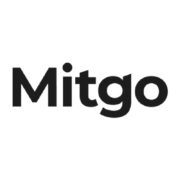Motorola, in partnership with the Lenovo Foundation, announces the next phase of indigenous language’s digital inclusion project with the addition of two new endangered languages – Kuvi and Kangri – spoken in regions of India. This initiative makes Motorola the first OEM to support the preservation of indigenous endangered languages from regions in India.
This initiative is a step towards Motorola’s commitment to embracing inclusivity and delivering smarter technology for all, by delivering the first-ever Kuvi language writing system and keyboard, and a fully localized Kangri smartphone User Interface to the devices.*
India tops UNESCO Atlas of World’s Languages in Danger list with 197 endangered languages, out of 2,464 endangered languages around the world, followed by the U.S. (191) and Brazil (190). When selecting the languages for this most recent phase of the project, Motorola analyzed many factors including the percentage of speakers in the communities to indicate loss of language, community access to technologies, engagement with the broader community, and availability of linguistics resources. This led the teams to find out that while the Kuvi language community accounts for about 155,000 people, primarily living in Odisha and Andhra Pradesh, India, only about 9% of the people in the region still speak
the language. Similarly, it was discovered that while Kangri is spoken by around 1.7 million people in India, only a very small fraction are fluent speakers.
The first-ever Kuvi language writing system
Motorola and the Lenovo Foundation worked closely with the Kalinga Institute of Social Sciences (KISS) under the guidance of Dr. Achyuta Samanta, Founder, KIIT & KISS, and leadership of Dr. Sushree Sangita Mohanty and received tremendous support from the Kuvi speakers & language experts to determine the needs of the Kuvi communities in all regions where Kuvi is spoken. This helped determine the most important step to develop the first-ever Kuvi language writing system to preserve the Kuvi language. As next steps, to facilitate the usage of this new written system, the teams created a Kuvi keyboard supporting 4 scripts – Kuvi Odia, Kuvi Telugu, Kuvi Devanagari and Kuvi Latin. The new keyboard will be made available for download on the Google Play Store to help with the utilization of the written form in smartphones and allow for other forms of digitization.
Commenting on the initiative, Dr. Achyuta Samanta, Founder, Kalinga Institute of Industrial Technology (KIIT) and Kalinga Institute of Social Sciences (KISS) said, “KISS with support from Lenovo Foundation has been integral in bringing together members of the tribal communities (Kondh, Kond and Jatapu), linguistic & technical experts and various other fraternity to collaborate with the Motorola Software Globalization team, to develop a keyboard for Kuvi Language. They have developed a writing system for Kuvi in 4 different scripts namely Kuvi-Odia, Kuvi- Devanagari, Kuvi-Telugu & Kuvi-Latin enabling 155000 speakers from these communities who are natives of Odisha and some parts of Andhra Pradesh- to communicate with each other via text. This initiative sets the path for the revival of many more such languages, helping to preserve the rich legacy, knowledge and heritage that rests in the depths of our country. This is a commendable use of technology to create a truly inclusive world, where communities living on the fringes, integrate into the larger world of opportunities.”
The first fully localized Kangri Smartphone User Interface
Motorola also worked alongside linguists, scholars, and experts from the Kangra, Hamirpur and Una districts of Himachal Pradesh, to deliver the first fully localized Kangri (क ांगड़ी) Smartphone User Interface, in both AOSP content and Motorola Experience apps. To make the Kangri experience seamless on the devices, Motorola added Unicode Common Locale Data Repository (CLDR) support with a richer Kangri language data and user interface, all locale-specific patterns for formatting and parsing such as dates, times, currency, measure units, country & language information, localizing English words into Kangri on the devices which means from the moment a Kangri user sets up their device, they can select the language and navigate a richer UI for both Android AOSP and Motorola experiences.
Professor Suhnu Sharma, consultant to Motorola’s Endangered Indigenous Language Initiative for Kangri, said, “With just about 1.7 million speakers of Kangri from a total 1.4 billion people who make India, Motorola and Lenovo Foundation’s language revitalization effort is truly a testimony of their commitment to preserving endangered languages. The project was humongous and extremely gratifying, as researchers, tribals, linguists, and tech professionals, worked together to localize over 200,000 English words into Kangri on Motorola’s devices, which will enable Kangri speakers to set up their device in their language and navigate their phone in their mother tongue. This initiative is an excellent example of technology working for diversity and inclusion.”
Prashanth Mani, Executive Director, Motorola Mobility Asia Pacific, added, “We at Motorola are extremely proud to demonstrate the power of a mobile phone in contributing to something significant as saving a language. As the first OEM to fully support the effort to protect endangered languages, Motorola India is excited to have brought the next phase of our indigenous languages’ digital inclusion initiative to fruition with the addition of two new languages – Kuvi and Kangri -spoken in regions of India. With massive penetration of smartphone users in India, this integration of native languages in written form will make these languages seen, spoken, and heard. By preserving these languages, we are contributing to preserving a wealth of culture and legacy, so unique and important to the diversity of our nation.”
To further its efforts in bringing more awareness and action to revitalize endangered indigenous languages, this past December, the brand has also partnered with UNESCO to conduct further research on the impact and potential of digitizing endangered indigenous languages. Over the last two years, the teams have worked with indigenous communities to ensure the support of three such languages to its devices – Cherokee (spoken in the United States), Kaingang (spoken in Brazil) and Nheengatu (spoken in the Amazon). The integration of Kuvi and Kangri into the phones in India is the next phase of this programme. Hezekiel Dlamini, Officer-in-Charge, UNESCO New Delhi, commented, “Lenovo and Motorola, in collaboration with UNESCO New Delhi Office, is in the planning phase to develop a toolkit sharing experience and technology in digitalizing endangered indigenous languages. This is in line with our shared vision for digital inclusion of indigenous communities.”
In addition to these languages, Motorola also recently introduced a new logo dedicated to the indigenous languages’ digitization initiative. The new logo is meant to make support of these languages more recognizable on the devices and raise awareness towards the cause.
Ms. Janine Oliveira, Executive Director of Globalization Software, Motorola Mobility, said, “With each phase of our endangered indigenous languages project, our goal is to help bridge the gap in digitally inclusive technology and inspire more actions towards the revitalization of these languages. The addition of Kangri and Kuvi to our growing list of supported languages is a milestone we’re excited to celebrate, but our work doesn’t stop here.”
Pratima Harite, Head CSR & Philanthropy, Lenovo Asia Pacific, said, “The digitalization of endangered indigenous languages is not just a mission to serve the underserved, it is a crucial aspect of Lenovo’s vision for Smarter Technology for All. As a global technology leader, Lenovo Foundation is dedicated to ensuring that diverse indigenous communities are an integral part of our digital journey, and this project lies close to our hearts.”
Moving forward, Motorola will continue to conduct research alongside indigenous communities and engage with regional teams to enrich the brands’ experiences and the lives of its incredible consumers.








